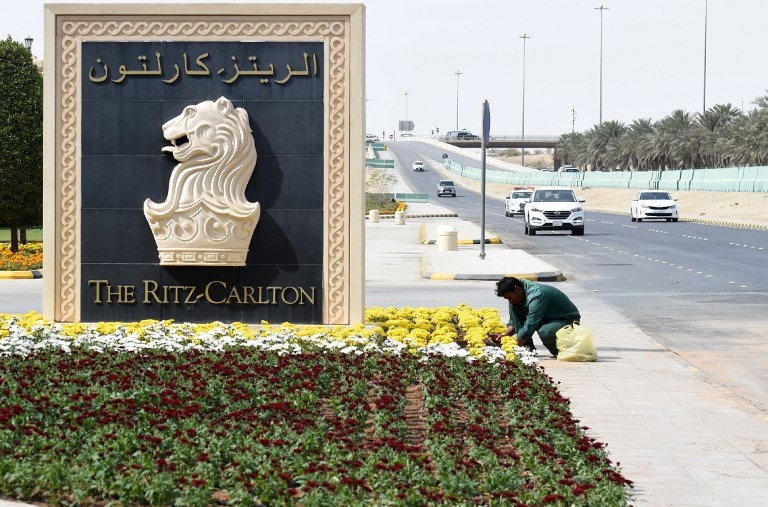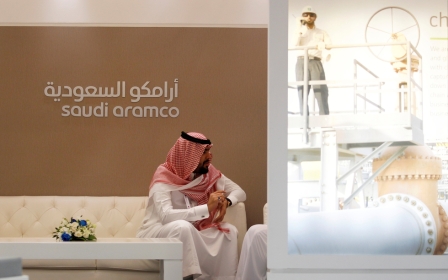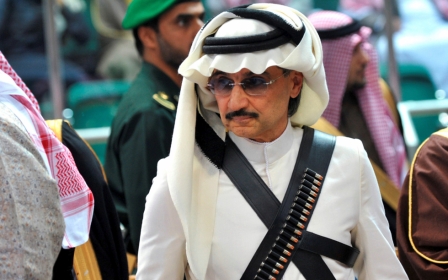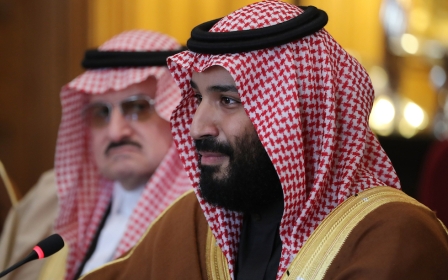Saudi corruption prisoner 'died with swollen body and twisted neck'

Saudi King Salman's order to establish new anti-corruption units as part of the kingdom's sweeping purge comes as fresh revelations have emerged of how prisoners caught up in the campaign were treated and where their assets have gone.
According to the report in the New York Times, the body of Maj Gen Ali al-Qahtani, an officer in the Saudi National Guard who died while still in custody, showed signs of abuse including a neck that appeared twisted and a badly swollen body.
On Sunday, the king called for the creation of the new bodies that are intended to "increase effectiveness" and accelerate the process of combating corruption, Attorney General Sheikh Saud al-Mojeb said in an information ministry statement.
Aside from Qahtani, the NYT reports that more than a dozen of the prisoners were abused while they were being held, and that many of the assets of the 381 princes, ministers and tycoons have yet to be seized.
Middle East Eye has previously reported that several of the prisoners - including Prince Miteb bin Abdullah and five other princes, and businessman Amr al-Dabbagh - were tortured while in custody.
The NYT report on Monday puts the figure to at least 17 people who were hospitalised for physical abuse.
When asked specifically about Qahtani, an official of the Saudi Embassy in Washington told NYT: “All allegations of abuse and torture of those investigated during the anti-corruption proceedings are absolutely untrue.”
The majority of the 381 people held have been released, but many now wear ankle bracelets that track their movements and cannot gain access to their bank accounts, according to the Times.
Their wives and children have reportedly been prevented from travelling.
Assets still in play
Saudi Arabia's attorney general said in January that more than $106bn was seized from the citizens arrested in the purge. An MEE investigation last month showed that basic facts about what had been seized and how that tallied with the $106bn figure remained unclear.
"The numbers don't gel," a financial advisor in the Gulf told MEE.
Financial advisers and associates of the prisoners have told the New York Times that many of the assets of those detained have yet to be seized and most of those already seized are domestic real estate and shares of companies that could take years to liquidate.
The government has taken charge of the Saudi Binladen Group construction company while chairman Bakr Binladen remains in custody, according to the NY Times.
The state has also reportedly taken "large sums" and real estate from Mohammed al-Tobaishi, former head of royal court protocol; Fawaz Alhokair, a businessman; Khalid al-Tuwaijery, former chief of the royal court; Adel Fakieh, former economic minister; and Dabbagh, a businessman who once oversaw the country's foreign investment authority.
As of last week, Fakieh and Dabbagh were still in custody, along with Hani Khoja, a business consultant and author, MEE reported last week.
Some critics have labelled the campaign a shakedown and power grab, but authorities insist the purge targeted endemic corruption as the country prepares for a post-oil era.
New MEE newsletter: Jerusalem Dispatch
Sign up to get the latest insights and analysis on Israel-Palestine, alongside Turkey Unpacked and other MEE newsletters
Middle East Eye delivers independent and unrivalled coverage and analysis of the Middle East, North Africa and beyond. To learn more about republishing this content and the associated fees, please fill out this form. More about MEE can be found here.




